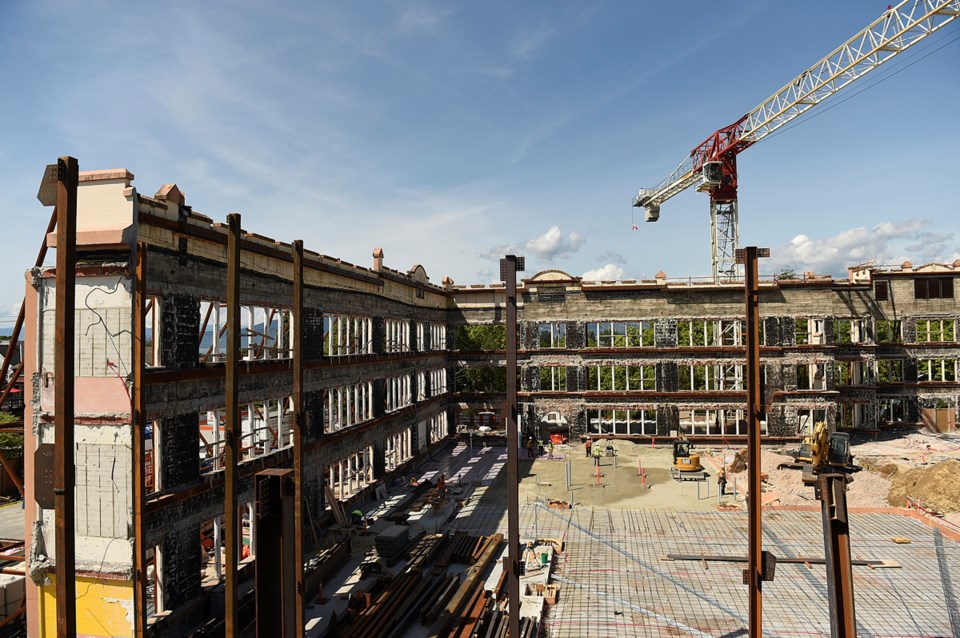In just under three weeks, Vancouver School Board staff will present trustees with a list of schools to consider for closure.
The list, to be unveiled at the June 20 board meeting, is part of the implementation the district’s updated Long Range Facilities Plan (LRFP), which trustees adopted on May 24.
The plan sets out the framework for the district’s facilities planning through 2030 in order to “ensure timely completion” of its seismic mitigation program and to help it achieve a provincially mandated overall capacity utilization of 95 per cent.
To that end, it sets out the criteria by which the board will make decisions on seismic upgrades, replacement schools, new schools and school closures across Vancouver.
Vision Vancouver trustee Allan Wong, chair of the VSB’s planning and facilities committee, said the looming threat of school closures, be it due to budget shortfalls, seismic upgrading or natural attrition, has distracted people from the main reason behind creating the facilities plan.
“The seismic part of it is the big thing,” Wong said. “Everyone’s talking about the closures and all that, but the whole reason for [the LRFP] is to have seismically upgraded [and] safe schools.”
Wong said there are certain pockets in Vancouver where new schools are needed, but the province won’t pay for any new builds until the district has reached the 95 per cent utilization mark.
According to the facilities plan, Vancouver schools currently operate, on average, at about 85 per cent capacity. In order to meet the province’s requirement, the district will likely have to permanently close the equivalent of 12 elementary schools and one secondary school.
Worth noting is that Maquinna annex, Laurier annex, and Henderson annex, which have no students registered for the 2016-17 school year and are being considered for possible closure, could count towards that total.
Should trustees accept the list of schools for potential closure on June 20, the board will conduct public consultations with each school’s community next fall. Although a specific timeline for the process has yet to be made, Wong said the consultations will begin in September and likely finish in November or December.
According to VSB policy, a decision on whether to close some or all of the schools on the list will need to made no later than December so parents and the public can be notified prior to registration for the next school year, which begins in January. School closures would take effect on June 30, 2017.
Wong said the criteria in the LRFP regarding school closures were amended following consultation this spring to include what he called “the social aspect” of such decisions.
“It’s not just figures and calculations and measuring distances,” Wong said.” “You have to measure how it will really impact certain groups, if not all groups.”
Wong said staff must now consider the effect of moving resources and programs further from the people who rely on them when determining which schools to close.
“One criteria that the board needs to look at when we look at school closures or reductions or temporary accommodations [during seismic upgrading] is [the impact on] vulnerable students,” Wong said. “Some people can just get on a bus or their parents can just drive them to the other school, but in some communities the parents are both working, [and] for the child to get up and go to a farther school is not that easy. The concern is some might not even attend.”
The LRFP also addresses the issue of heritage retention. The district has 35 schools on the City of Vancouver’s heritage registry, 18 of which have yet to be seismically upgraded. According to the LRFP, the VSB is currently completing feasibility studies on 11 of those schools to determine the most cost-effective approach.
Wong said decisions about heritage retention are made on a case-by-case basis and depend greatly on the cost involved in keeping those heritage elements intact, adding the cost also determines the level of conservation that can be done.
“If you look at Kitsilano [secondary], it’s strictly the façade,” Wong said. “[Whereas] somewhere like Strathcona [elementary] it’s a complete heritage retention where basically everything is kept and saved.”
“Other schools, it’s just so costly to do an upgrade and keep the school as is that basically you have to tear the whole school down and just rebuild,” Wong added. “At the end of the day it just comes down to the cost.”
According to the facilities plan, if all 18 schools on the heritage registry are retained, the additional costs could be in the range of $40 to $50 million. Since the Ministry of Education doesn’t usually provide specific funding for heritage retention, the VSB would be on the hook for all of it, which it can’t afford.
Furthermore, Wong said it’s cheaper for the district to do other necessary upgrades such as to plumbing and to heating and ventilation systems — which, he pointed out, the province doesn’t fund — while a school is already “opened up” for seismic upgrading. The more non-seismic upgrades and maintenance a site needs, the less budget there is for things like heritage retention.
VSB staff will present the board with the list of potential school closures at a public meeting on Monday, June 20 at 7:00 p.m. The meeting will be held in room 114 at the Vancouver School Board Education Centre, 1580 West Broadway.
@jameswesmith



